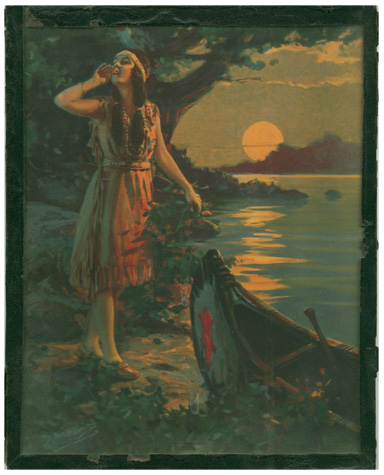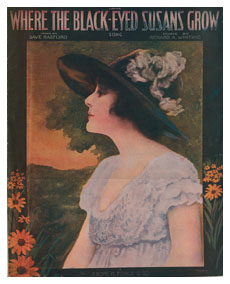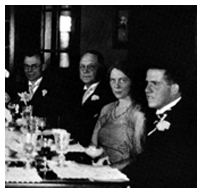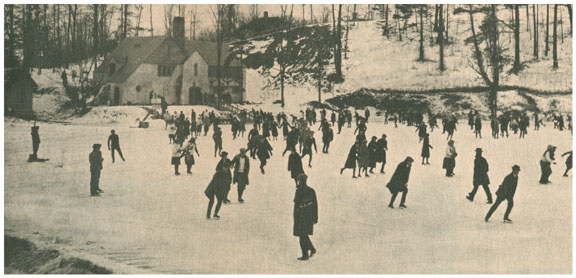
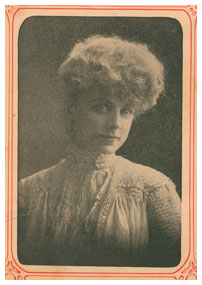

Elsworth Brown bought most of his dozen or so properties in Cayuga and Cornell Heights after the steel Thurston Avenue bridge opened up that territory to residental development.
Camile was always more attached to her father than to her mother, who was what was then called "sickly," and about whom very little is known.
It was always known and remarked that she was dark, and somewhat younger than he was, but there is no record of her maiden name. Nor of their marriage, for that mattter. We would like to hear at the Edgewood Ledger if someone knows a bit more about her.
As an eight and ten year old even, Camile often accompanied her father on his real estate rounds, whether they were sweeping the porch of a rental house, supervising an addition to another, or plotting a driveway on a newly aquired lot. He always discussed the details with her and did that in such an entirely uncondescending tone, that you might have thought he was only talking to himself, asking himself a question by way of mulling things over, but Camile learned to respond in the same language, even giving answers to his questions and suggestions which, as often as not, he took.
There is a great deal of confusion about every aspect of Cameo or Camile Braun/White's or Brown's life, and she herself did much to create that confusion

As willfully as she ran her father and everything else, Camelia's strongest passion was a somewhat more inner one, or at least a more complicated one, and it was for the camera. This dated from her tenth birthday when she had been granted an old box camera big enough to be a doll house. Mostly it sat there in her room like a television( as she could not have recongnized)and she would photograph first her stuffed animals and actual doll house tablealus, with the dolls posed in the midst of extremeely dramatic circumstances. Camelia's uncle Sam who had donated the camera, had been drafted to handle the glass plates and chemicals for her.
But beyond that Camile had decided that she wanted to become a great architect, which was a popular idea with her father, so she enrolled in Cornell Art and Architecture School . At Cornell Camile pretty much ignored Architecture outside of her father's business, but literally lived in the studio with painting and photography and her cat.
She did not give up her role at her father's private office when she enroled at Cornell. She had very much influence with her father, who would buy about any property she attached her will to, including, as it happend, a born looser like Bridge House. At that time , with Wharton Studios headquartered at the foot of Cayuga lake, Ithaca was still experiencing its fifteen minutes of being the motion picture capital of the world: a period which had to come to an end as soon as the company had seriously encountered the local weather, and didn't become famous uintil a hundred years later. Camile handled rentals and management of Bridge house and also lived there half the time. Among her first set of tennants was a Wharton Motion Picture Company cameraman: a Swiss citizen named Braun. Braun had invented a wind-up. clock-work camera . the main benefit of which was that it kept the film moving through at a steady rate no matter how fast the action. He hadn't sold the Wharton Stuidios or anything else with money, on the camera. The prototype was in his quarters, usually in pieces and occupying about half of the room.
While enroled at Cornell Camile started atending filming at Whatrton Studios down at Renwick Park. Soon she gave him her own room and Bridge house, so he could a deicated room for the camera.
Before she even graduated, Camelie's father suffered some disasterous real-estate loses, and died Her mother, who required consant care, went to a home. C Whatrton studios gave up trying to film in Ithaca with equipment that demanded bright, dry weather sluch as had been discovered in California. Braun lost his job, Camile had never had one.Suddenly they had very little but Bridge House.
But Camile and Braun had a plan to market the camera and raise money for the upcoming "Bridge house Studios" which would produce motion pictures to be filmed there with the camera.
Camile had long had several moving pictures in mind and Cameo White stared in all of them. They proposed first of all, to make an epoch film centered around a legendary indident when the Algonquins defeated the early post-glacial Boe-Gae ( those small, yellow-tinged people) in the famous "Battle on the Ice." Bridge house was to have been the center of this new movie making industry, and the filming location of the several subsequent films-to-be.
The pair of them did raise enough money to support Bridge House and its fund raising programs for ten years and more, but not enough money to buy film. Nevertheless Cameo and her cameraman schedualed a number of film shoots to which the press and the public were invited, none of which produced anything but a few small investments in their enterprise, because as some suspected but few knew, there was never any film in the camera.
That enterprise came to a sudden end when, during an attempt to" film " a battle scene on the ice of Beebee lake, the weight of the large crowd broke the ice and dozens of people went through, one of whom was never found. The Bridge house camera went through also, but was found, and was found to be empty of film. The life of Cameo went on to its well known end with the seven wolf hounds, but Braun left town and the movie was over*
*(Though there are current plans for "Cameo White and the Seven Dogs", a low-light digtal movie to be shot in Ithaca using animated figures against real local settings IF you want to support this work with a sizable contribution-please no pledges of under ten thousand dollars, contact Movie@EdgewoodPlaceBB.com).
